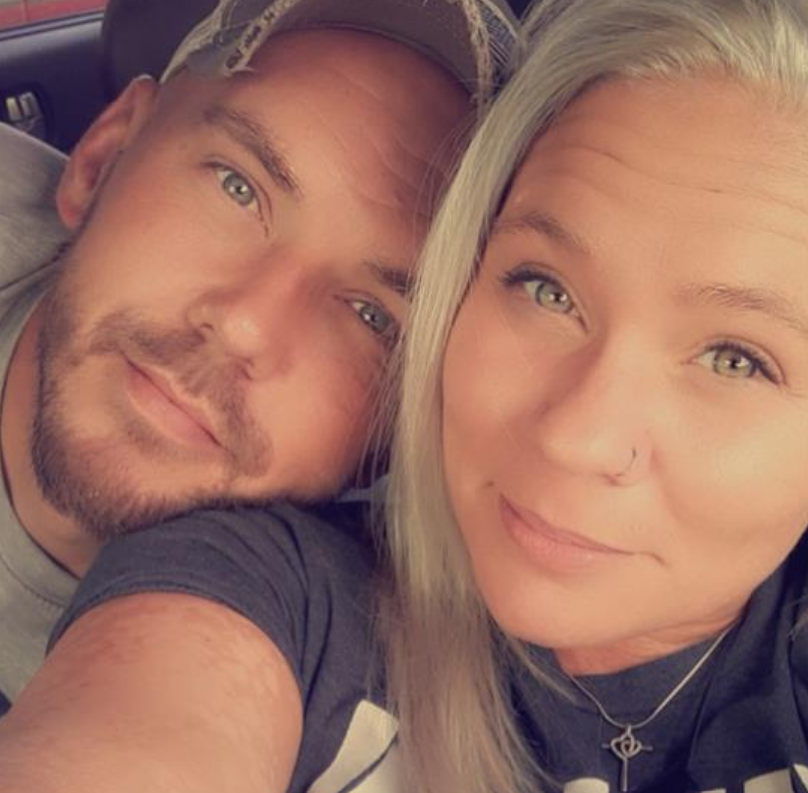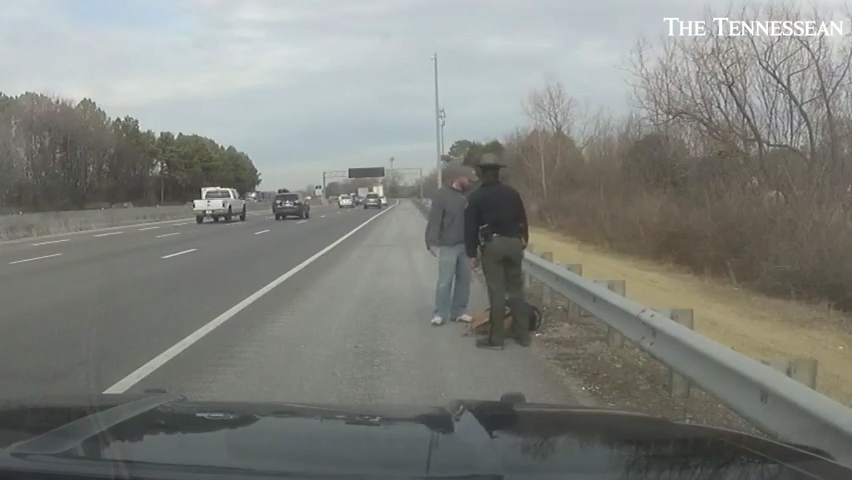Lawsuit against Nashville police over Landon Eastep shooting passes first hurdle
The case against police officers and state troopers sued over the 2022 killing of Landon Eastep will continue after a federal judge recently declined to dismiss the excessive force claims against them. Nine law enforcement officials opened fire on 37-year-old Eastep after a tense 30-minute standoff on Interstate 65 when he pulled a metal object later determined not to be a weapon from his pocket.
The ruling is the first significant development in the lawsuit filed by Landon Eastep's widow, Chelesy Eastep, more than 18 months ago.
U.S. District Judge Waverly D. Crenshaw Jr. chose not to grant immunity to the officers and troopers in a March 29 ruling. Qualified immunity is a legal doctrine that shields police and other government officials from liability for their misconduct.

The six Metro Nashville police officers and one Mount Juliet police officer who were sued filed an appeal to the 6th Circuit U.S. Court of Appeals late last week in hopes that the higher court will grant them immunity.
As part of the same ruling, Crenshaw threw out the claims against the Metro Nashville and Mount Juliet governments, which the lawsuit argued should be held legally liable for the actions of their police officers.
Crenshaw threw out one claim against the officers and troopers for failure to protect Eastep from further harm after the initial shots were fired, but the thrust of the lawsuit lied in the excessive force claim, which survived the ruling.
Crenshaw stopped short of denying qualified immunity to the officers and state troopers, instead reserving the issue until there is "further factual development" in the case, including at which point each individual officer fired at Eastep. Such development would likely hinge on body camera footage from each officer and trooper, which has not yet been provided to the court.
With the footage provided, Crenshaw wrote that he "can only guess which gun shots belonged to each Individual Defendant."
"Without additional factual information or evidence, the Court cannot identify the subset, if one exists, of the Individual Defendants who, as a matter of law, exercised the required restraint," Crenshaw wrote.
That said, Crenshaw could still identify the shots fired by former officer Brian Murphy, who fired two bullets after another officer called a cease-fire order. The judge wrote in a footnote that "the video evidence clearly establishes Murphy did not load his rifle onto his shoulder until Eastep had fallen." The Metro Nashville Police Department decommissioned Murphy hours after the shooting.
At about 1:45 p.m. on Jan. 17, 2022, Tennessee Highway Patrol Trooper Reggie Edge Jr. stopped to check on Eastep, who was walking on the side of I-65 near the Harding Place exit about five miles south of downtown Nashville. Off-duty Mount Juliet Police Department Cpl. Fabjan Llukaj stopped to assist.

The trooper and officer drew their guns when Eastep produced a box cutter. The most recent lawsuit claims Eastep produced the box cutter to comply with the trooper's order to give him anything that could harm him. MNPD previously said Eastep "pulled a box cutter" on the trooper. A 30-minute standoff followed while a second THP trooper and several MNPD officers arrived. The most recent version of the lawsuit, amended in May 2023, describes Eastep as "emotionally distressed" at the sight of the many officers with guns drawn on him, making him "incapable of fully understanding" their verbal commands.
During the standoff, Eastep kept holding the box cutter but would not remove his other hand from his pocket when asked. Multiple officers opened fire after Eastep brought his hand from his pocket, holding what police have described as only a "cylindrical piece of metal" that was not a weapon. The most recent version of the lawsuit states that object was Eastep's vape pen.
Nine officers shot, firing at least 33 bullets. Twelve bullets entered Eastep's body, an autopsy showed. Only four bullets entered the front of his body, while five entered through his back.
Later that day, MNPD posted a video to its YouTube channel with partial body camera footage of the shooting, including from cameras worn by Officers James Kidd and Sean Williams.
A day after the shooting, Chelesy Eastep said at a news conference that she wants "people to remember that Landon didn't deserve this. "
"Landon wasn't a bad guy. He was crying out for help, and his cries went completely unanswered," she said.
On Sept. 15, 2022, Chelesy Eastep filed the federal lawsuit in U.S. District Court for the Middle District of Tennessee, represented by Lewisburg lawyer David McKenzie. A day later, Davidson County District Attorney Glenn Funk announced that he would not prosecute any of the officers involved in the shooting, saying that "all shots fired were legally justified."
While qualified immunity is intended "to shield officials from harassment, distraction, and liability when they perform their duties reasonably,” it has been scrutinized as a way for public officials to dodge repercussions for bad behavior, with calls from criminal justice advocates to do away with it growing in recent years as more public attention has been placed on police violence. Judge Don Willett on the 5th Circuit U.S. Court of Appeals in 2018 wrote, "To some observers, qualified immunity smacks of unqualified impunity."
Evan Mealins is the justice reporter for The Tennessean. Contact him at emealins@gannett.com or follow him on X, formerly known as Twitter, @EvanMealins.
This article originally appeared on Nashville Tennessean: Lawsuit against Nashville police for Landon Eastep shooting continues
